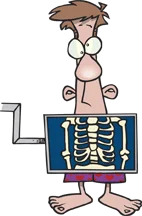Chart Of Accounts
Introduction

The Neglected Red-Headed Step-Child !!!!!
Why Would I Say This ? In my opinion, this topic like the red-headed step-child, is not given the attention and respect it deserves. Many of the textbooks and courses that I've looked at "gloss" over the chart of accounts by giving a definition and throwing in a simple example.
What Is The Chart Of Accounts ?
The Chart Of Accounts is a listing of all the individual accounts in the general ledger that contains the account's name, a brief description of the account, and optional other identifiers (codes) or a coded account number assigned to aid in recording, classifying, summarizing, and reporting transactions.
Your accounting system is built around this skeleton list of account names called the chart of accounts and is organized by the types of major accounts. The accounts you set up are tailored for your particular type of business.

What's an Account ?
An Account is a separate record for each type of asset, liability, equity, revenue, and expense used to show the beginning balance and to record the increases and decreases using debits and credits for a period of time and the resulting ending balance at the end of the period. All the Individual Accounts make up or become a part of the Chart Of Accounts.
What are the Major Type of Accounts ?
If you don't already know, the major types of accounts are:
- Assets
Formal Definition: The properties used in the operation or investment activities of a business.
Informal Definition: All the good stuff a business has (anything with value). The goodies.
Includes: Cash, Receivables, Investments, Buildings, Land, Equipment, Vehicles, etc. - Liabilities
Formal Definition: Claims by creditors to the property (assets) of a business until they are paid.
Informal Definition: Other's claims to the business's stuff. Amounts the business owes to others.
Includes: Payables, Notes, Loans, Mortgages, etc. - Equity
Formal Definition: The owner's rights or claims to the property (assets) of the business.
Informal Definition: What the business owes the owner(s). The good stuff left for the owner(s) assuming all liabilities (amounts owed) have been paid.
Includes: Owner's Capital Invested and the Accumulated Profits or Losses for the business since it began. - Revenue
Formal Definition: The gross increase in owner's equity resulting from the operations and other activities of the business.
Informal Definition: Amounts a business earns by selling services and products and investing. Amounts billed to customers for services and/or products.
Includes:
Sales of Goods and Services - revenue directly related to daily operations.
Other Income - revenue not directly related to daily operations such as Interest and Dividends. - Expenses
Formal Definition: Decrease in owner's equity resulting from the cost of goods, fixed assets, and services and supplies consumed in the operations of a business.
Informal Definition: The costs of doing business. The stuff we used and had to pay for or charge to run our business.
Includes:
Cost of Goods Sold - the cost of the products being sold by the business.
Operating Expenses - the expenses related to daily operations such as rent, advertising, insurance, etc.
Other Expenses - the expenses not directly related to daily operations such as Interest and Financing.
How Are They Organized ?
The chart of accounts is typically organized and listed in a special order. Balance Sheet Accounts are listed first followed by the Income Statement Accounts.
Note: This USA Order may vary depending on your country.
Sample Simple Chart Of Accounts
Balance Sheet Accounts - 100-199
Assets Accounts - 100-199
Cash In Bank - 100
Accounts Receivable - 150
Inventory -160
Office Equipment - 175
Trucks & Vehicles - 180
Liability Accounts - 200-299
Accounts Payable - 200
Sales Tax Payable - 210
Other Accruals - 250
Equity Accounts - 200-299
Owner's Capital -300
Owner's Drawsa - 350
Income Statement Accounts
Revenue -400-499
Sales -400
Consulting Services -400A
Computer Sales -400B
Costs & Expenses -500-599
Cost Of Goods Sold-Computers -500
Purchases -510
Advertising -502
Utilities- 506
Vehicle Operation -512
Rent Expense-513
Office Supplies -514
Insurance Expense -515
Maintenance & Repairs -516
Depreciation Expense -517
Telephone -518
Bad Debt Expense -519
Professional Fees -520
Bank Charges - 521
Note: Account Numbers are optional. It's OK to just use the Account Name.

For The Curious
So you know. Your chart of accounts can be as simple or complex as you need to provide the financial information you need to manage a business.
Sample Balance Sheet Accounts
Descriptions & Definitions
Sample Income Statement Accounts

What's next ?
Let's explore the General Ledger.
